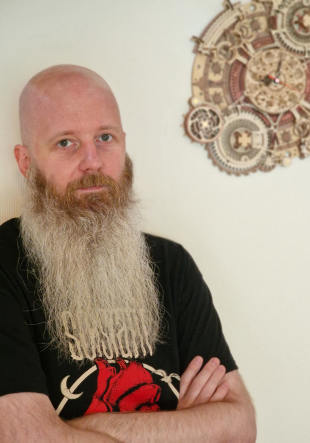Ordered DNA origami lattices on silicon surfaces for molecular lithography
Overview
While the use of individual DNA origami nanostructures in the molecular lithography fabrication of functional metal nanostructures is well-established, the application of ordered DNA origami lattices as lithography masks faces several challenges. In the first phase of this project, we demonstrated the successful assembly of hexagonal and fishnet DNA origami lattices on oxidized silicon wafers. However, lattice quality was found to depend strongly on the applied environmental conditions, with different DNA origami nanostructures requiring different protocols for lattice assembly and transfer to the dry state, as well as on the type and nature of the silicon oxide. Furthermore, using a densely packed DNA origami lattice instead of single nanostructures requires extensive parameter optimizations in the subsequent etching and vapor deposition steps. Therefore, the second phase of this project aims to reduce the complexity of the fabrication pipeline and increase its robustness by replacing these steps with area-selective electrochemical deposition (ASECD). For this, conducting thin TiO2 films will be deposited on highly doped silicon surfaces by atomic layer deposition (ALD). Using ALD-grown TiO2 films on silicon will not only enable electrochemical metal deposition but also yield highly reproducible substrates with almost identical surface properties. The assembly of hexagonal and fishnet lattices on those TiO2 electrodes will be investigated in dependence of different environmental conditions. ASECD of various metal nanostructures on the TiO2 electrodes will be investigated using both a direct and an indirect approach. In direct ASECD, various metals will be deposited directly in the holes of the assembled DNA origami lattices. In indirect ASECD, metal nanostructures will be grown using DNA origami-patterned self-assembled monolayers (SAMs). The results of this project will culminate in an alternative, less complex, and more robust method for the fabrication of ordered metal nanostructure arrays that overcomes the main limitations of the established process. Furthermore, because of the use of ALD-grown TiO2 films as substrates for DNA origami lattice assembly, it will also work with other conducting substrates, such as metal or carbon electrodes. In general, it allows also for the fabrication of metal-metal or metal-metal oxide heterostructures. Therefore, this approach has great potential for the fabrication of functional surfaces with applications not only in optics and plasmonics but also in electrochemical sensing, electrocatalysis, and photovoltaics.
Key Facts
- Keywords:
- DNA origami , molecular lithography , self-assembly , atomic force microscopy , adsorption
- Grant Number:
- Project type:
- Forschung
- Project duration:
- 02/2026 - 01/2029
- Funded by:
- Deutsche Forschungsgemeinschaft (DFG)


